|
We teach young children measurement because this helps them begin making connections between spatial concepts and number. We begin to work with measurement by developing an understanding of longer vs. shorter objects and comparing the length of various objects. When a child can put a set of objects in order from shortest to tallest, or tallest to shortest, he is ready to begin learning how to measure things using nonstandard units. We use nonstandard units like paperclips, markers, or rods when we begin teaching measurement rather than standard units of measurement, like inches or feet. This helps children develop a concept of measurement and counting units while eliminating "tick counting errors". A "tick counting error" is when a child is counting tick marks on a ruler and begins by counting at the first mark, zero. When using nonstandard units, such as rods, there are no tick marks and the student learns that the unit is the length of one rod. The students must learn accurate alignment in order to correctly measure with nonstandard or standard units. These skills develop over extended periods of time, through exposure to many different experiences. In this blog entry we deal only with measuring the length of objects, but children also need plenty of opportunities to measure weight and volume.
0 Comments
Patterning is an important mathematical skill. It is one way we turn chaos into order. Proficiency in multiplication, addition and skip counting (and reading!) all require an understanding of patterning. Some children have a hard time creating a pattern on their own. Pattern copying and adding on to an existing pattern are important skills children need before they can create their own patterns. When children become proficient at creating patterns, we introduce other variables to the pattern. For example, when children were asked to read the pattern below, at first they said "orange, blue, purple, orange, yellow, yellow!" They quickly discovered that there was no way to tell what comes next by looking at the colors, and eventually concluded that the pattern here is "adult, child, adult child," or "tall, short, tall short." Of course, we practiced more patterns with extraneous variables so the children would continue to solidify and build onto their patterning foundation.
Teacher: Every item in this hoop follows a rule. Each item is the same in some way. Can you tell me how all of these objects are the same? The rule is, everything in this hoop must be..... Student: Everything is red. Teacher: Everything is red? (points to a bear) Is this red? (points to triangle) is this red? Now we can say that the rule for this hoop is that everything inside this hoop must be red. What about this hoop? What could be the rule for this hoop? Everything in this hoop must be.... Student: They're all different colors! Teacher: They are all different colors. That's a way that they are different. Is there a way that they are all the same? Student: They're red! Teacher: Yes, some of them are red. Are all of them red? (points to red one) Is this one red? (points to another red) Is this one red? (points to a yellow) Is this one red? (points to a blue) Is this one red? Are all of them red? Student: No.... Teacher: Then that can't be our rule. Everything in this hoop is the same in some way. How are they all the same? Student: They're bears. Teacher: Are they ALL bears? (points to one) Is this a bear? (points to another) Is this a bear? Our rule for this hoop can be that everything in this hoop must be a bear. Teacher slides the two hoops so that they overlap. Teacher (points to the yellow hoop): Everything in this hoop must be a... Student: Bear! Teacher (points to the red hoop): And everything in this hoop has to be... Student: Red! Teacher: And here, in the center, it is part of the yellow hoop (teacher outlines yellow hoop with pointer finger). It is also part of the red hoop (teacher outlines red hoop). Since it is part of this hoop, everything in here has to be a bear. It is also part of this hoop (teacher outlines red hoop), which means that it also has to be.... Student: Red! Teacher: To belong in the center, it has to be a bear and it has to be... Student: Red! Teacher: Can you find anything that belongs in the center? Something that is a bear and red? The products used in this lesson are Attribute Blocks and Counting Bears. I highly recommend both of these products for their versatility in math instruction.
In order for a child to have a comprehensive mathematical understanding, he must be exposed to mathematical concepts beyond numbers and counting. There are five fields into which we group our Math Standards: Number Sense, Geometry, Measurement, Sorting and Patterning, and Problem Solving. This blog entry will cover the Academic Standards that fall under the Problem Solving category. Thinking Ahead - By playing strategy games like "Nim," a child can develop the ability to think one or more steps ahead of her opponent. What's Missing? - Given a pattern or a set of objects, a child can determine what is missing. Estimation Probability - For preschoolers, this is the ability to determine whether an outcome is likely or unlikely. Given the shapes shown below, is it likely or unlikely that I will pick up a square? Story Problems Skip Counting - Counting by fives, tens or twos. At this age, this could be categorized with problem solving skills or number sense. Problem Solving is just one small part of preschool mathematics. We have broken Problem Solving into six standards:
Thinking Ahead What's Missing? Estimation Probability Problem Solving Skip Counting In our classroom, each lesson, game or classroom material has been intentionally planned and placed in the room to fulfill our Academic Content Standards. Our goal, as preschool teachers, is to expose each child to all areas of mathematics building a strong foundation for the comprehension of mathematical concepts. There are five fields into which we group our Math Standards: Number Sense, Geometry, Measurement, Sorting and Patterning, and Problem Solving. This blog entry will cover the Academic Standards that fall under the Sorting and Patterning category. Sorting and Patterning Sorting by One Attribute - Sorting by One Attribute is the act of grouping objects into sets by color, shape, size, or another attribute. Sorting by Two Attributes - Sorting by two attributes is grouping objects into sets by two attributes. When we begin making Venn diagrams, these sets would belong in the middle of the Venn diagram - groups that are red AND round or large AND blue, etc. Make-A-Rule Sorting - Given a set of objects, a child can make her own rule and group the objects accordingly. The child who sorted the buttons below grouped them by number of holes on each button. Pattern Copying - Pattern Copying is simply copying a pattern that has already been laid out. A child may need to be exposed to pattern copying many times before he can add on to an existing pattern or create his own pattern. Adding on to a Pattern Creating a Pattern Reading and Interpreting Patterns - The child can read and interpret a pattern in a new way. The children below are reading a visual pattern and interpreting it with their bodies. Creating a Venn Diagram Creating a Matrix Sorting and Patterning is just one small part of preschool mathematics. We have broken Sorting and Patterning into nine standards:
Sorting by One Attribute Sorting by Two Attributes Make-A-Rule Sorting Copying a Pattern Adding on to a Pattern Creating a Pattern Reading and Interpreting Patterns Creating a Venn Diagram Creating a Matrix In our classroom, each lesson, game or classroom material has been intentionally planned and placed in the room to fulfill our Academic Content Standards. Preschool teachers pave the road for a deeper comprehension of mathematical understanding (manipulation of concepts rather than memorization). It is our goal to prepare each of our students for success in every area of mathematics. There are five fields into which we group our Math Standards: Number Sense, Geometry, Measurement, Sorting and Patterning, and Problem Solving. This blog entry will cover the Academic Standards that fall under the Measurement category. Measurement Comparing Sizes - Comparing the size of two objects according to length, weight, or volume. The sand and water tables are an excellent place for kids to experiment with volume. Ordering Objects by Size - Ordering objects from largest to smallest (or smallest to largest) according to length, weight or volume. Measuring Objects Using Non-Standard Units - Using chain links, cubes, blocks, paperclips or other non-standard units to measure the length, weight or volume of an object. Measurement is just one small part of preschool mathematics. We have broken Measurement into nine standards:
Comparing Length Comparing Weight Comparing Volume Ordering Objects by Length Ordering Objects by Weight Ordering Objects by Volume Using Non-Standard Units to Measure Length Using Non-Standard Units to Measure Weight Using Non-Standard Units to Measure Volume In our classroom, each lesson, game or classroom material has been intentionally planned and placed in the room to fulfill our Academic Content Standards. In order for a child to have a comprehensive mathematical understanding, he must be exposed to mathematical concepts beyond numbers and counting. There are five fields into which we group our Math Standards: Number Sense, Geometry, Measurement, Sorting and Patterning, and Problem Solving. This blog entry will cover the Academic Standards that fall under the Geometry category. Note: Many of our Standards may fall under several categories. In order to prevent repetition, some of the visual/spatial standards that could be grouped with Geometry have been grouped with the English/Language Arts Standards. Geometry Two-Dimensional Shape Recognition - Two-Dimensional Shape Recognition is the ability to visually recognize and name basic two-dimensional shapes such as square, triangle, circle, heart, oval, octagon. Two-Dimensional Shape Description - Two-Dimensional Shape Description is the ability to describe a shape according to some of its attributes (it's round, it has four sides, it has three points). Design Matching and Copying Symmetry Distinguishes Alike/Different Three-Dimensional Shape Recognition - Three-Dimensional Shape Recognition is the ability to visually recognize and name basic three-dimensional shapes such as cube, cylinder, cone, and sphere. Three-Dimensional Shape Description - Three-Dimensional Shape Description is the ability to describe a three-dimensional shape (it's round, it's shaped like a ball, it's a box-shape). Geometry is just one small part of preschool mathematics. We have broken Geometry into seven standards: Two-Dimensional Shape Recognition Two-Dimensional Shape Description Design Matching and Copying Symmetry Distinguishes Alike/Different Three-Dimensional Shape Recognition Three-Dimensional Shape Description In our classroom, each lesson, game or classroom material has been intentionally planned and placed in the room to fulfill our Academic Content Standards.
Often people think of preschool math as nothing beyond counting and numbers. However, it is the teacher's duty to prepare each child for every field of mathematics. There are five main areas into which we group our standards: Number Sense, Geometry, Measurement, Sorting and Patterning, and Problem Solving. This blog entry will cover the Academic Standards that fall under the Number Sense category. While repeated exposure to activities/games that include these concepts is paramount to the child's understanding, it is important to understand that a young child may not "get" a particular concept until he is developmentally ready. Number Sense Rote Counting - Rote counting is the ability to name the number words in the correct sequence. One-to-One Correspondence - One-to-One Correspondence is the ability to pair one object with one number while counting objects (the child says "one" as she touches the first object, "two" as she touches the second object). A child may have one-to-one correspondence to seven or to seventy. The object is to build this until a child has one-to-one correspondence indefinitely. One-to-One Correspondence may also be practiced (without counting) by matching one object to one specified space. In the photo below on the left, a child is placing one bean into each section of an ice cube tray. In the photo on the right, the child is placing one cookie onto each square of his game board. Numeral Recognition - Numeral Recognition is the ability to visually recognize and name numbers. Quantification - Quantification is the ability to answer "How many?" Conservation of Number - Conservation of Number is the ability to understand that the number of objects does not change no matter how they are arranged. (In each of the photos below, there are ten chips. There are a different number of black vs. white chips in each photo, and although the chips are physically arranged differently, there are still ten chips in each photo.) Comparing Sets - Comparing Sets is the ability to determine which set between two or more sets, has fewer, more or an equal number of objects. Counting Forward - Counting Forward is the skill used when a child can begin at a given number and continue counting. For example, if a child rolls two dice (six and two) he may point to the first die and say "six" and then point to the second die and continue with "seven, eight". Inclusion - Inclusion is the skill used when a child must count out a given number of items from a larger set. If instructed "hand me three gems," the child will include three gems. Sequencing - Sequencing is using a rule to order numbers, colors, or parts of a story. Number Sense is just one small part of preschool mathematics. We have broken Number Sense into nine standards:
Rote Counting One-to-One Correspondence Numeral Recognition Quantification Conservation of Number Comparing Sets Counting Forward Inclusion Sequencing In our classroom, each lesson, game or classroom material has been intentionally planned and placed in the room to fulfill our Academic Content Standards. Estimation is a valuable skill in our world. We use it more often than we may realize. Contractors frequently use estimates, and I, personally, use my own "guesstimate" system to remain within budget while grocery shopping. Young children must be introduced to any math concept they will be expected to to understand - at a level that they can understand. We placed six blocks around Sisi so the children could see about how much of her body those six blocks covered. The children were encouraged to guess how many blocks it would take to go all the way around her body. We decided that since we already used six blocks, our guesses would have to be a number higher than six. For some children this is fairly easy; for others, this can be a difficult concept. When working with a difficult problem, we must decide what is known. For this problem, we know two things. 1.) We know that our guess must be a number. We want to know how many blocks it will take. 2.) We also know that it will take more than six blocks to go all the way around Sisi. Any guess that is within our knowns is praised as a good guess. For the next guessing activity, the children drew a long line on butcher paper and guessed how many crayons it would take to cover the whole line. It's important for children to have many different experiences with each new concept we are introducing. Estimation has a great deal to do with number sense and understanding the concepts how many, more, and less. In the instances pictured, it also pertains to the concept of measurement. Children with "off-the-wall" guesses will begin to guess more accurately as they gain more experience.
In preschool. we use non-standard units (blocks, unifix cubes, footprints, etc) to practice measurement. Before we teach a child to measure, we must introduce him to the concept of size. When a child can put things in order by size, he is ready to learn how to use non-standard units to measure things. We made these "measurement cards" so that children could practice lining the blocks up from one end to the other. These children are measuring various objects on cards and then recording their answers. When we do an activity with this many things to measure, we usually take more than one day to complete the activity. Non-standard measurement can and should be practiced with length, weight and volume. We know that a child has mastered a concept when he spontaneously begins to do it by himself during learning center time.
|
AuthorWendy Joy Yohman Archives
December 2017
Categories
All
Sites I recommend:Affiliate Disclosure:
|
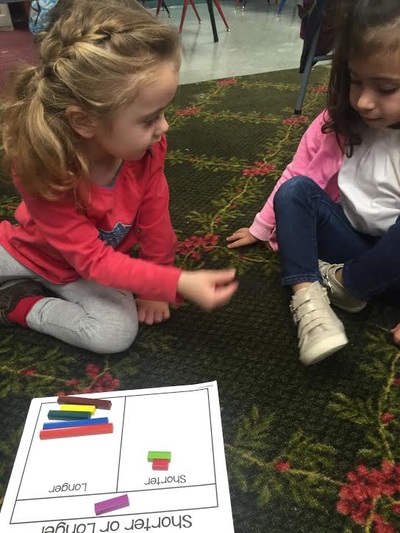
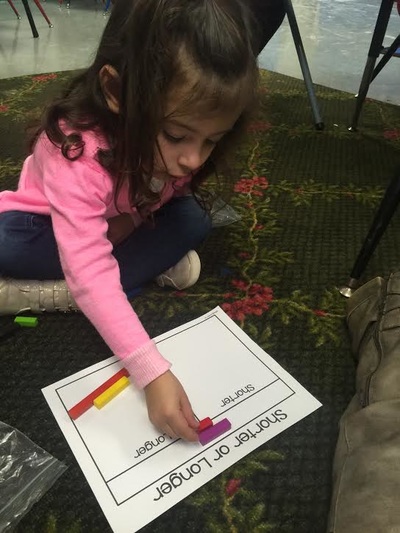
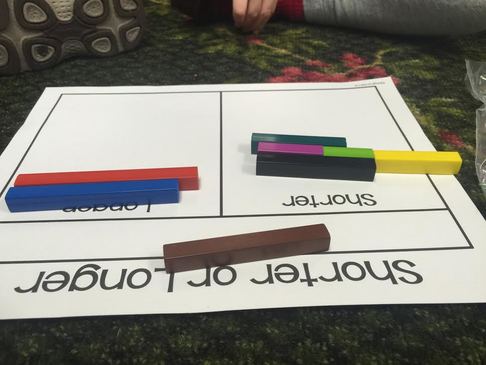
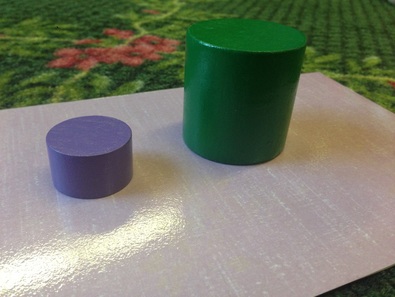
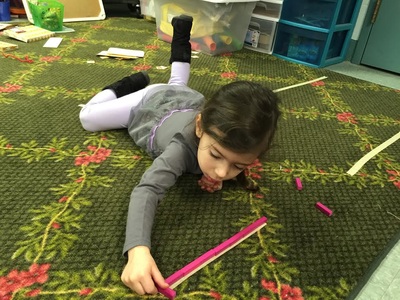
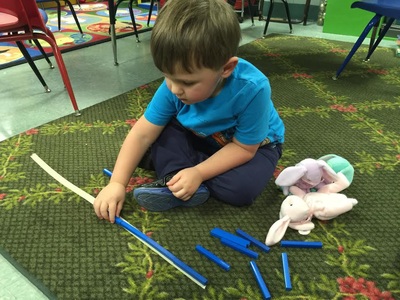
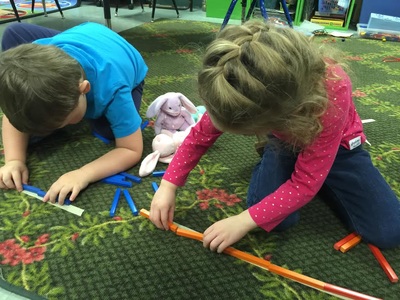
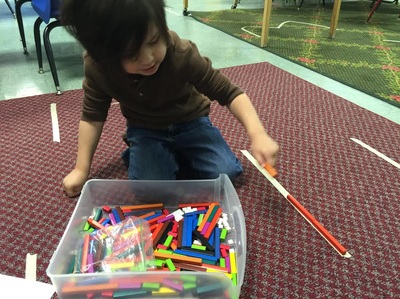
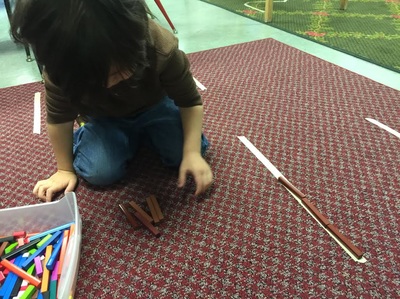
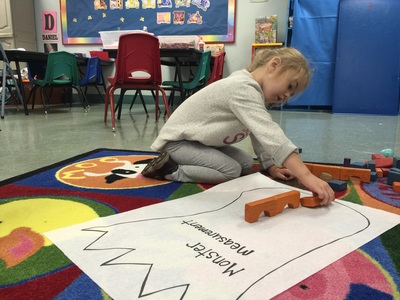
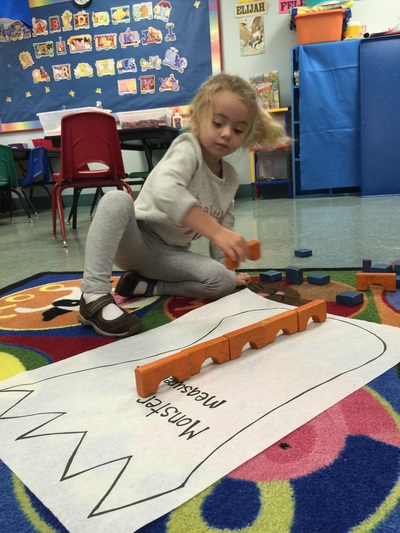
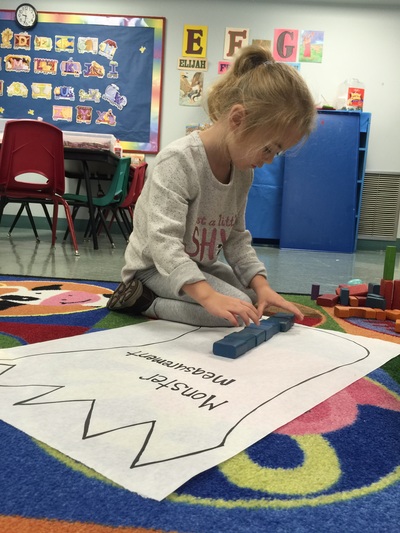
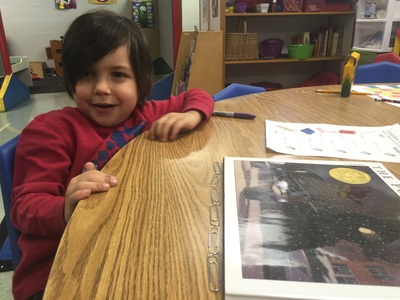
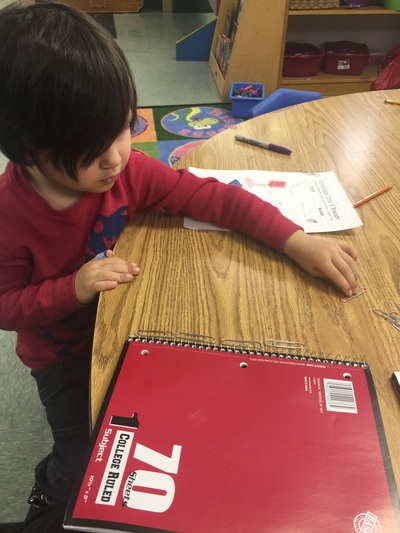
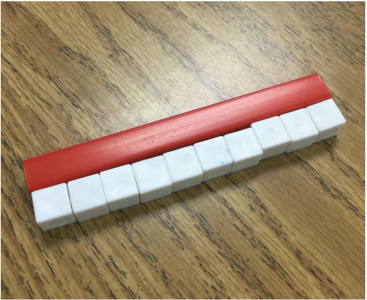
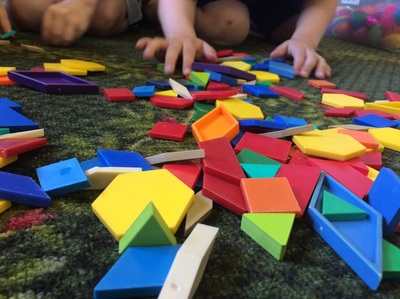
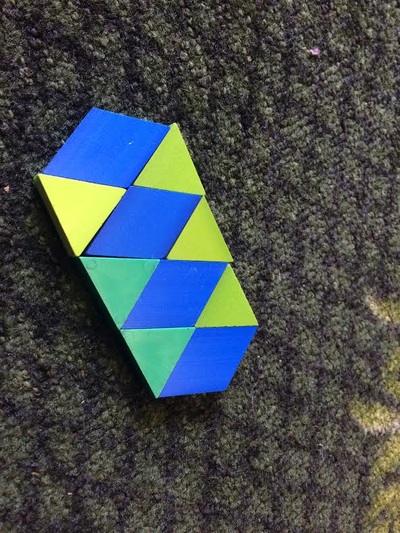
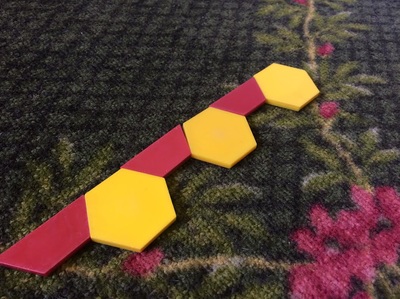
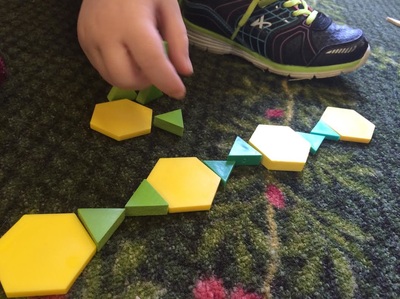
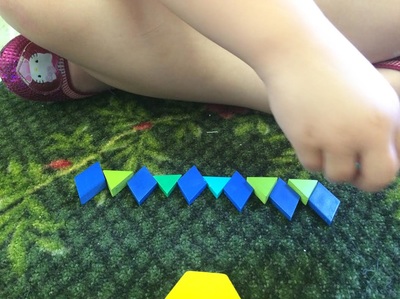
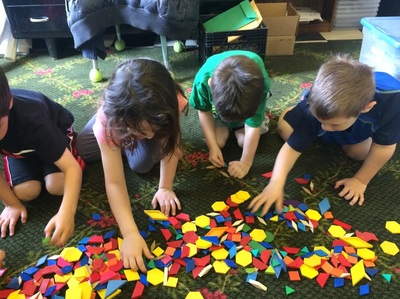
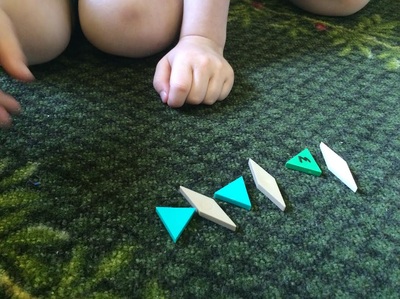
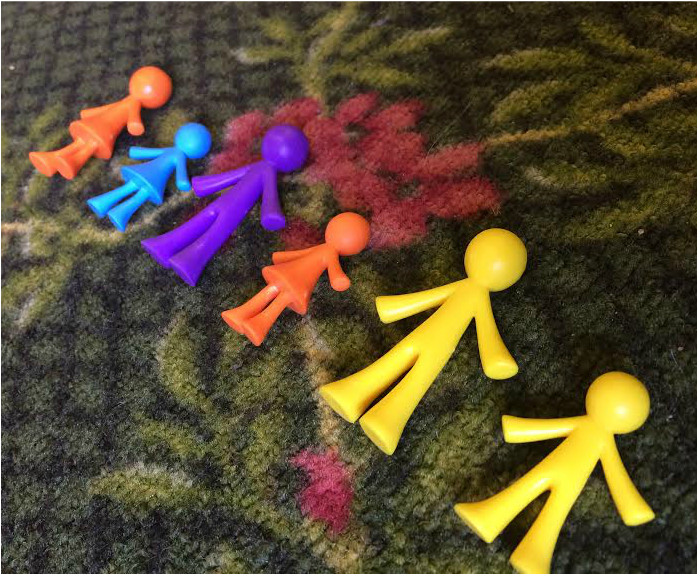
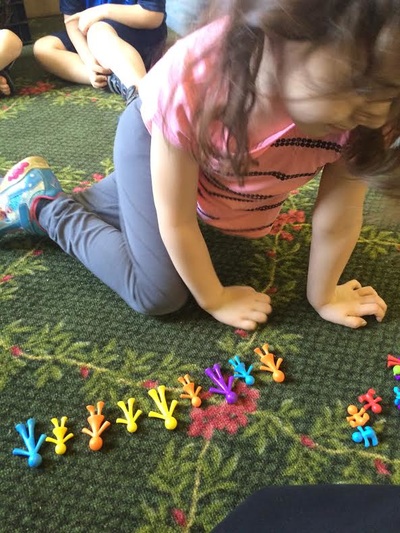
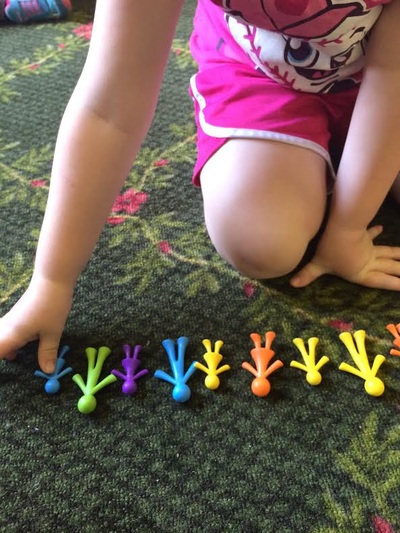

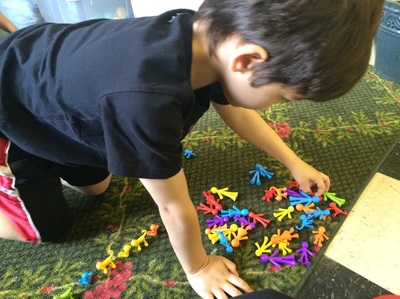
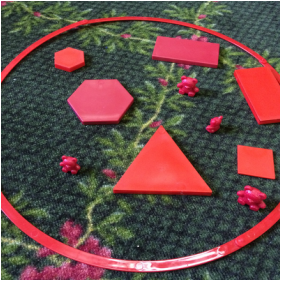
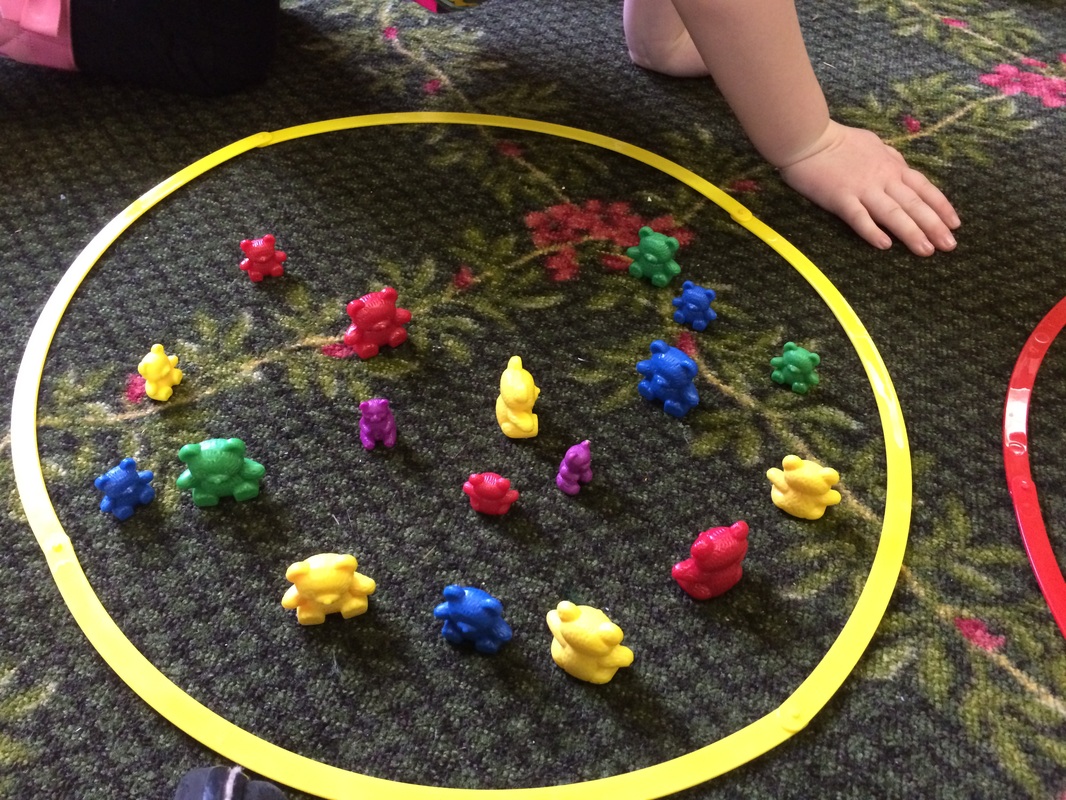
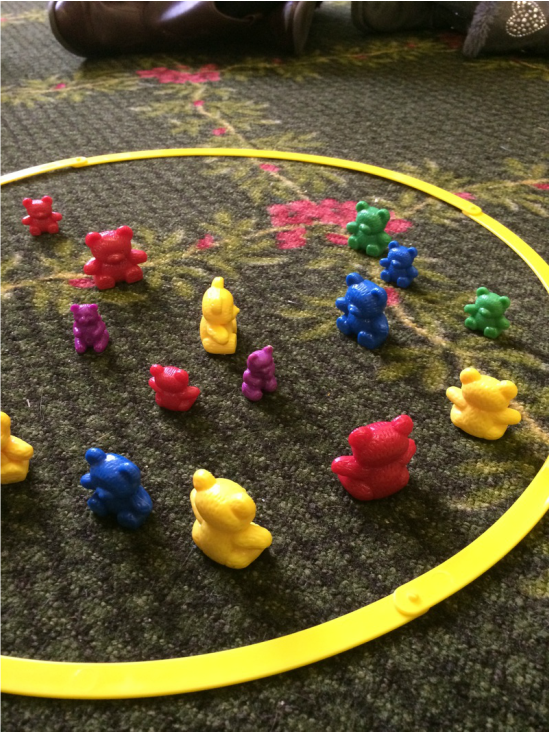
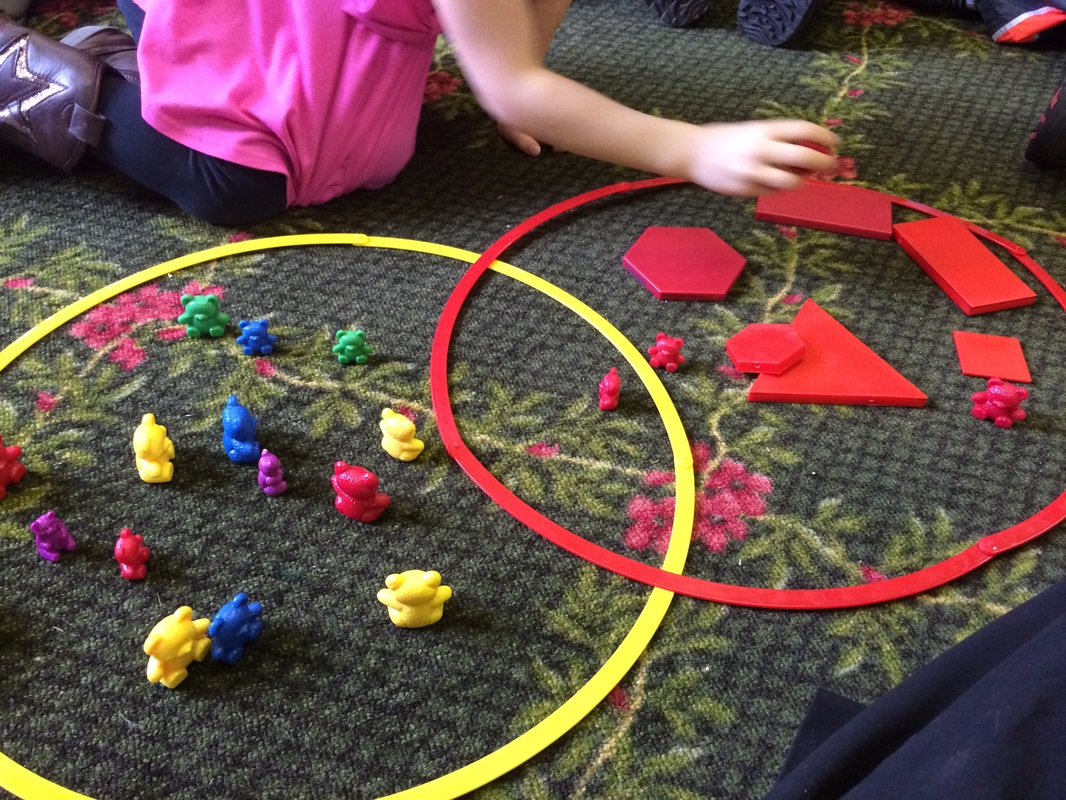
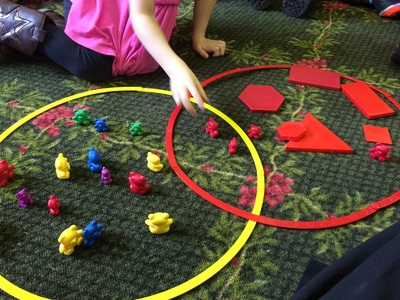
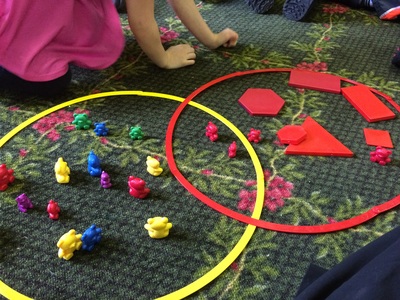
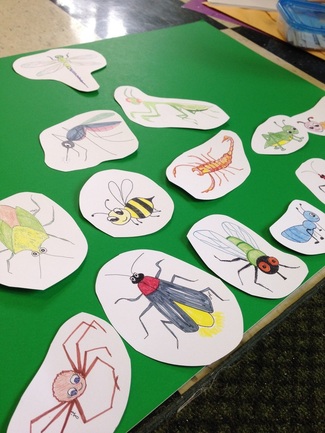
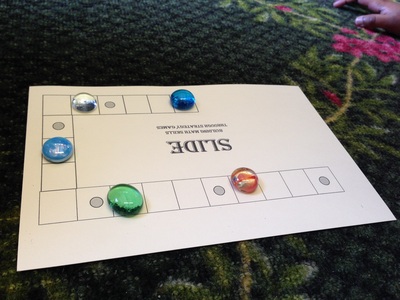
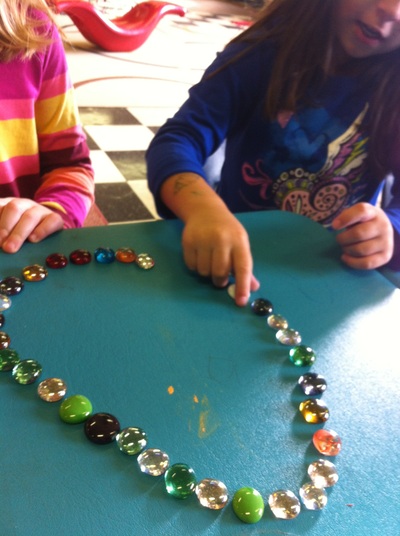
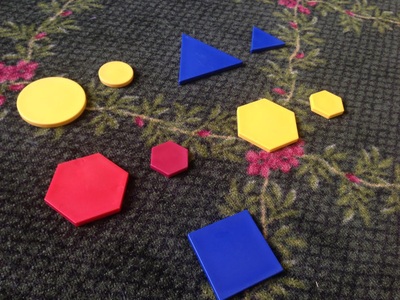
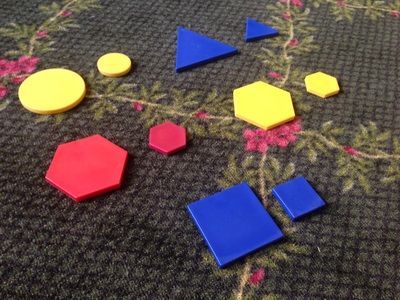
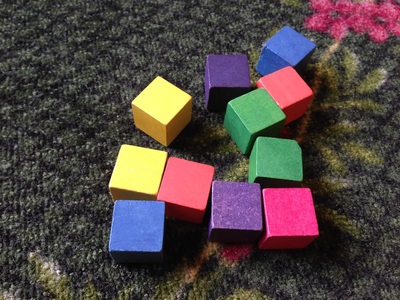
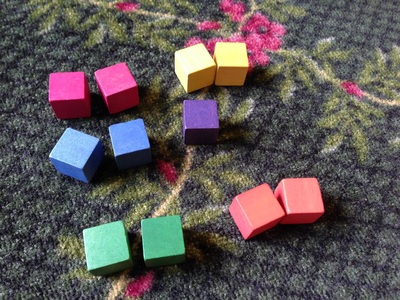
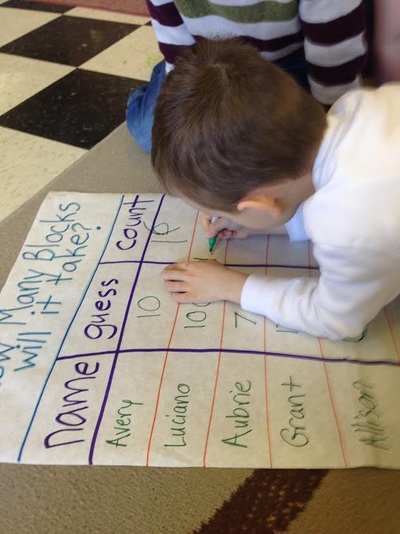
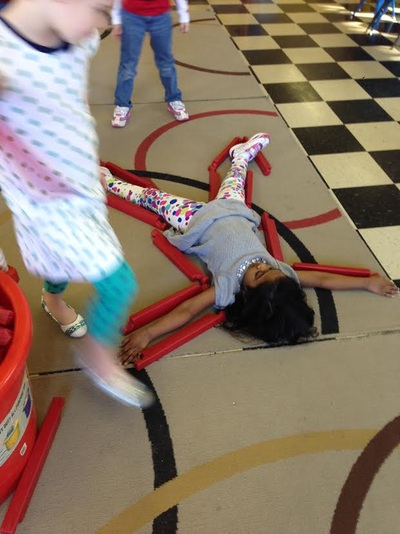
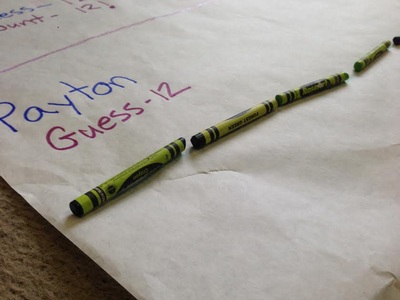
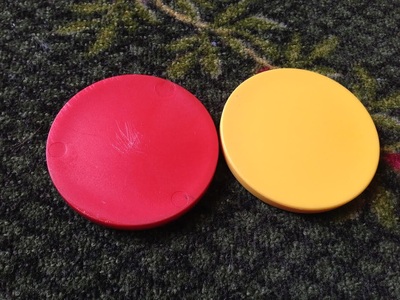
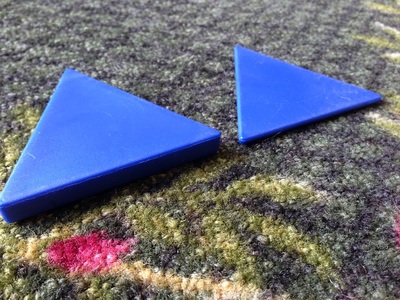
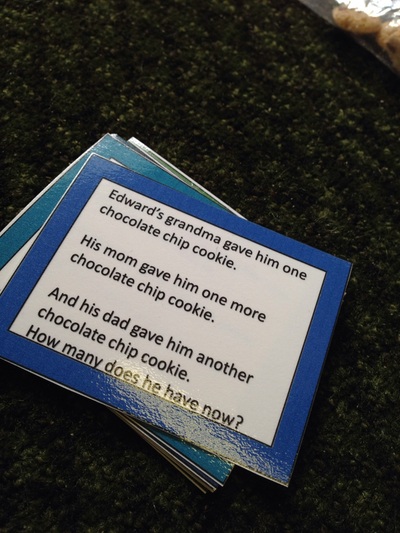
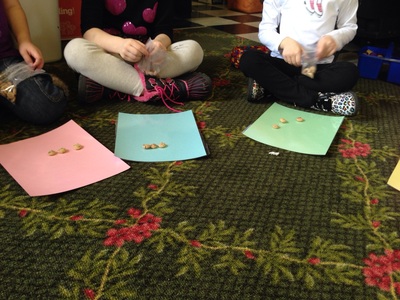
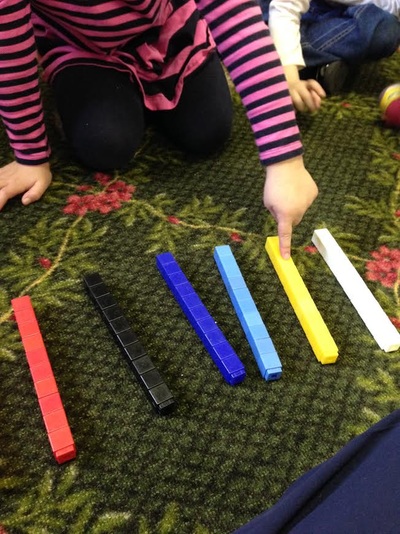
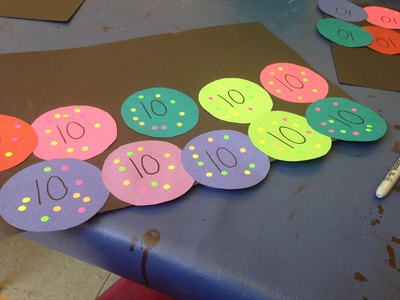
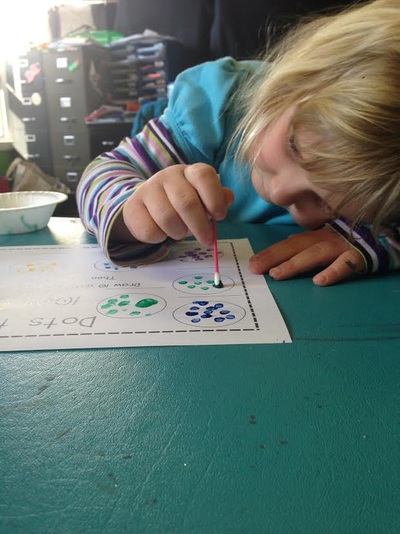
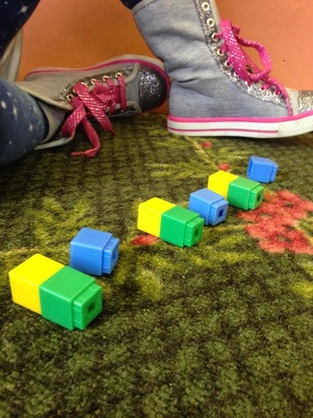
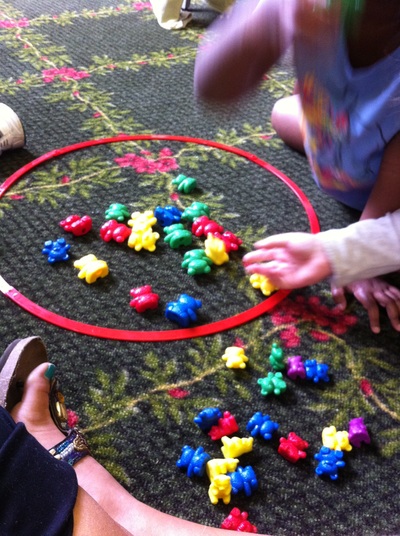
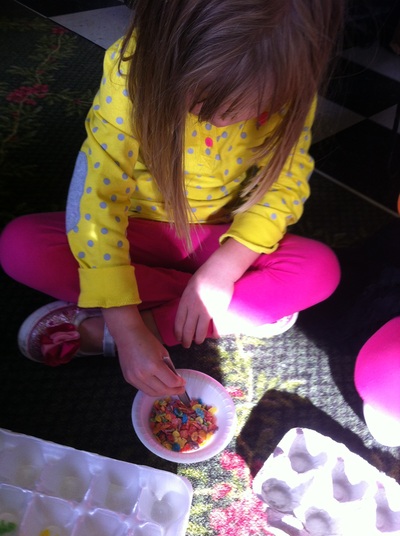
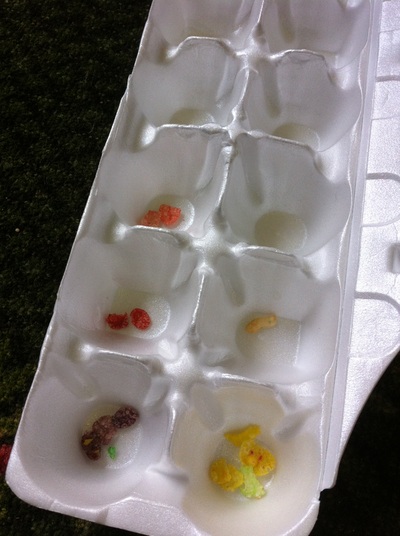
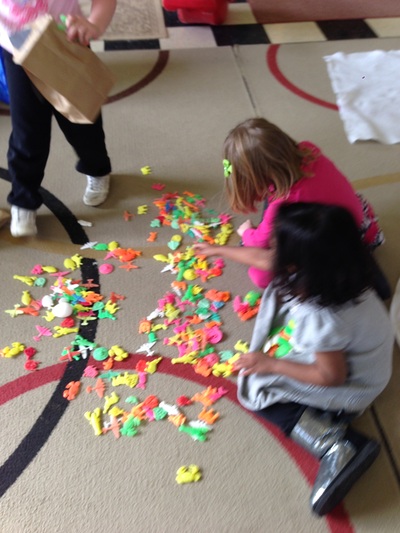
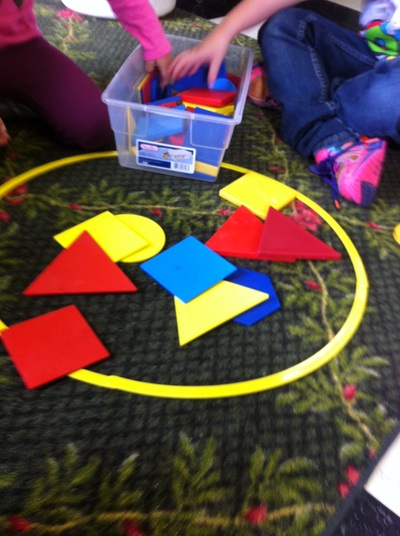
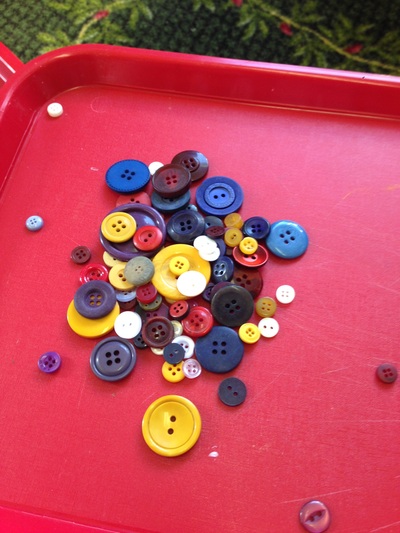
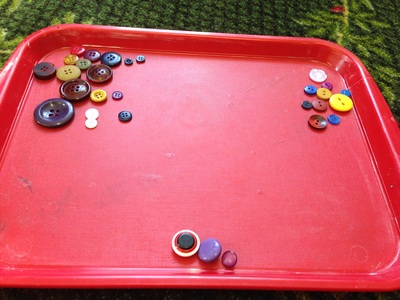
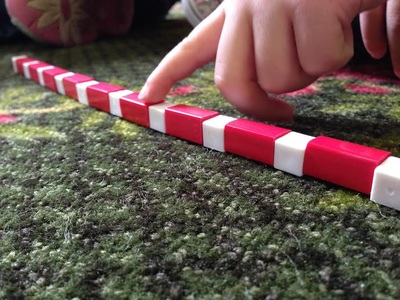
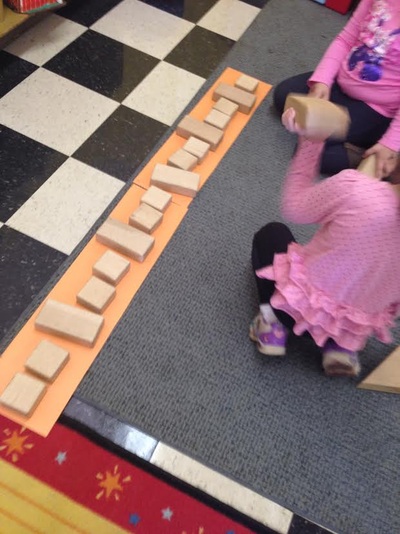
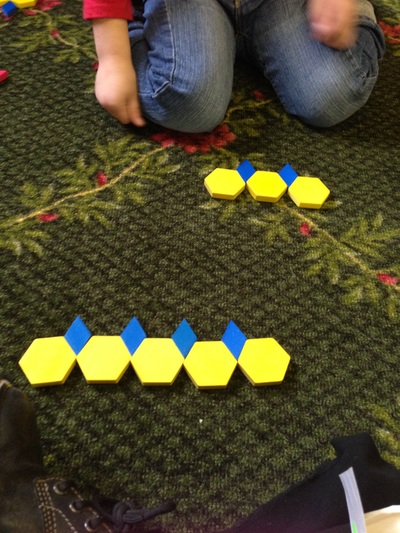
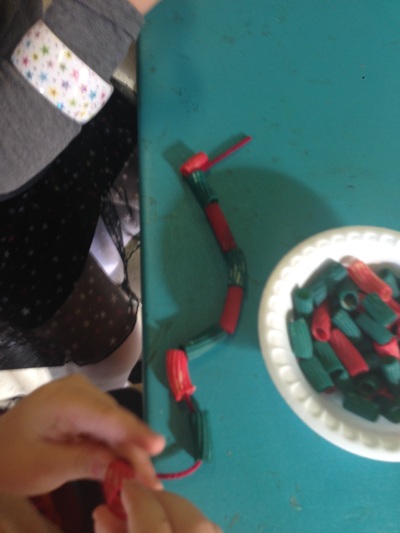
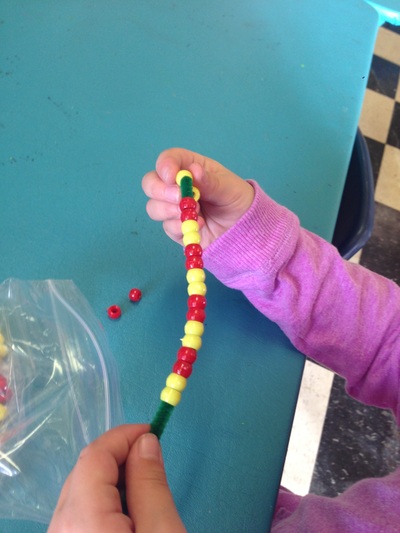
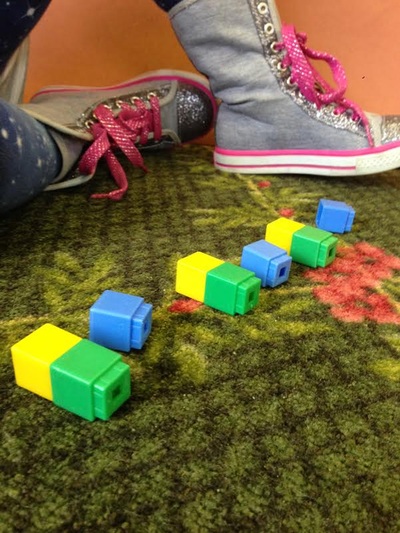
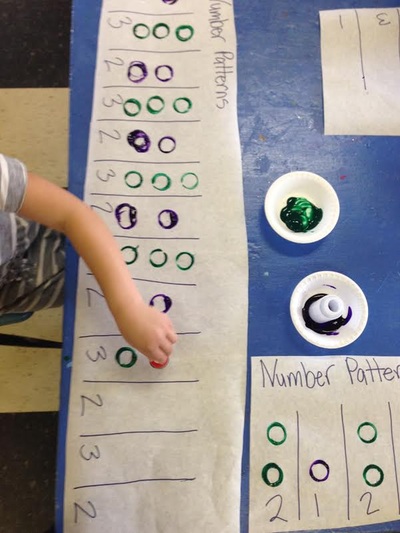

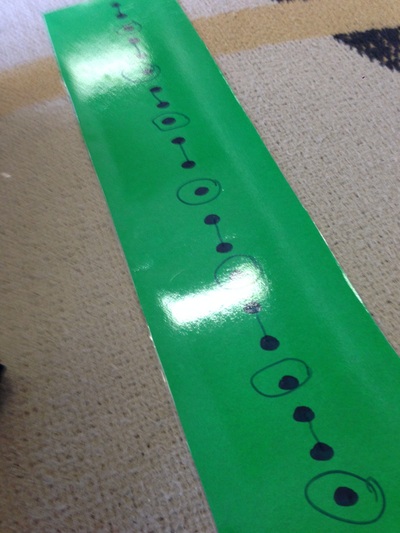
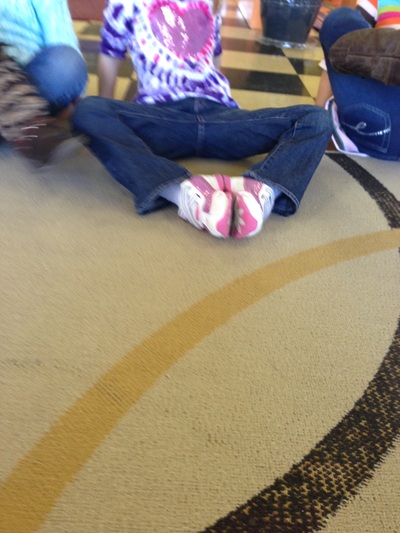
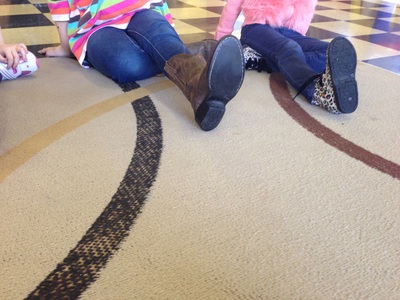
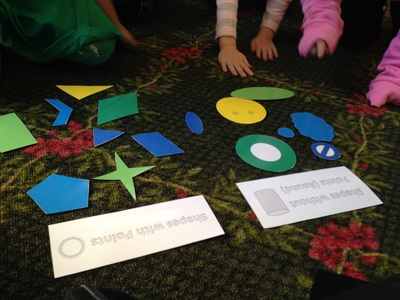
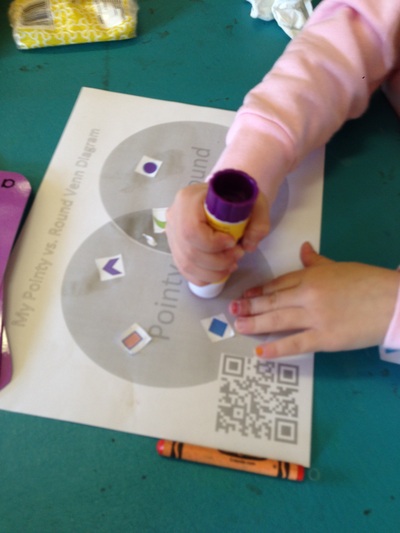
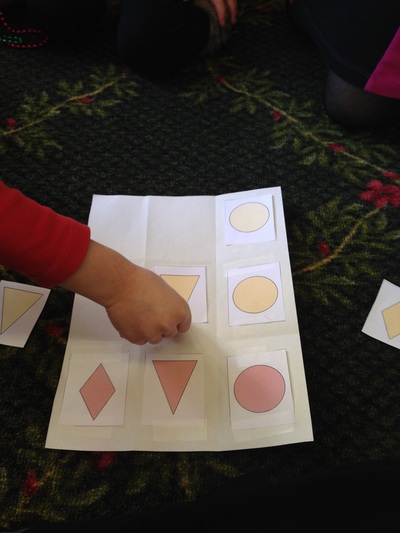
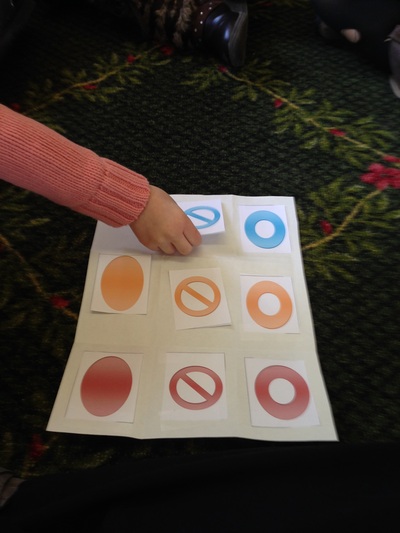
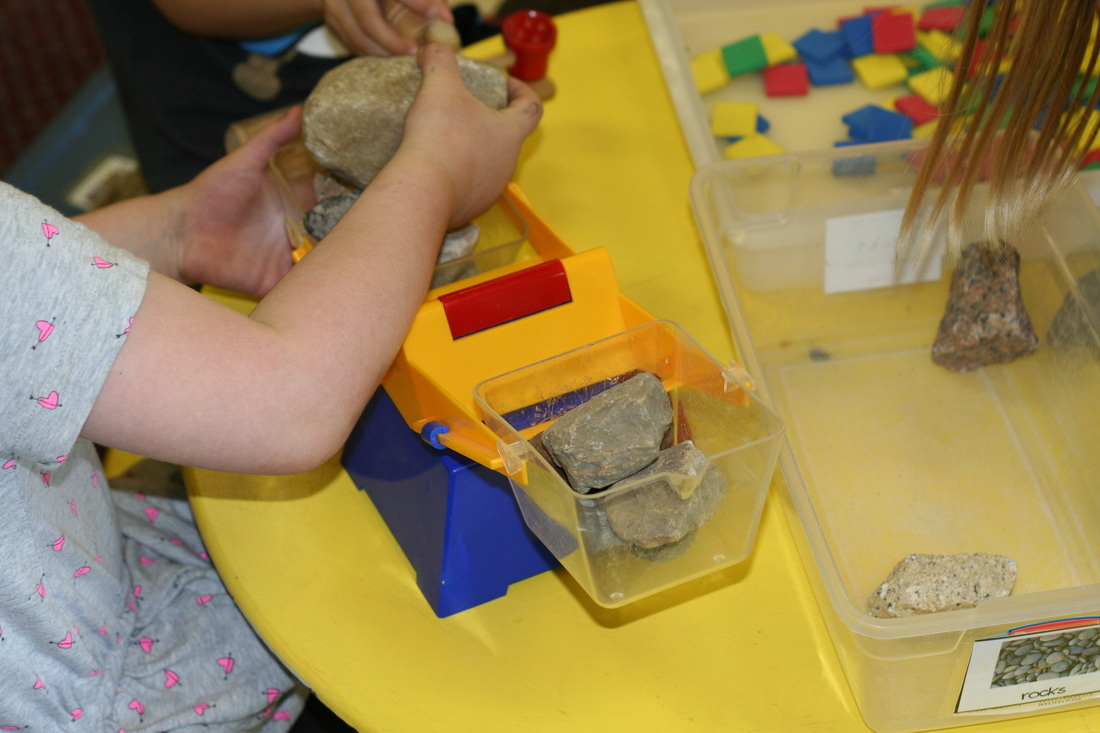
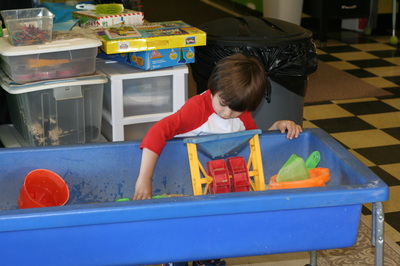
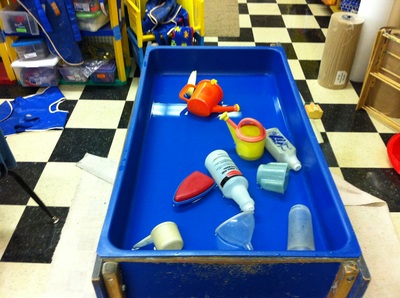
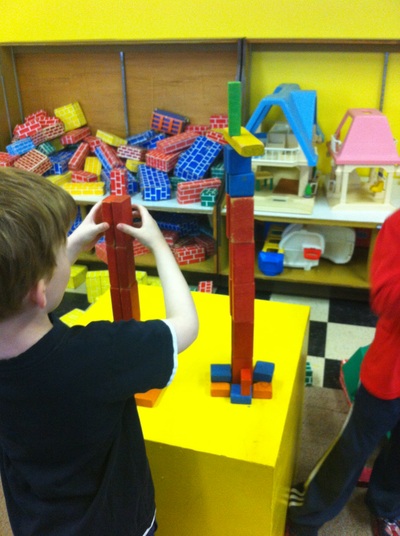
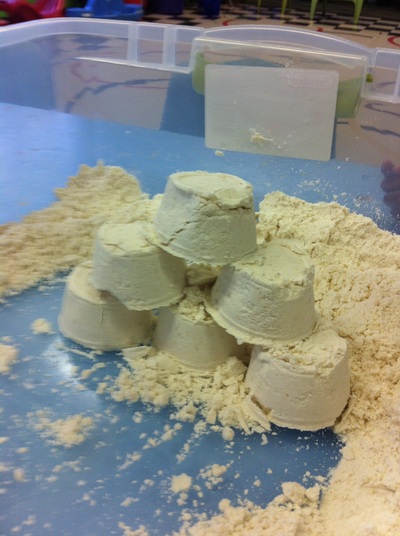
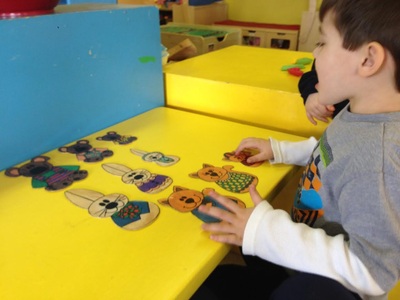
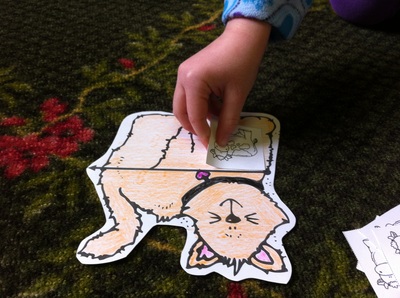
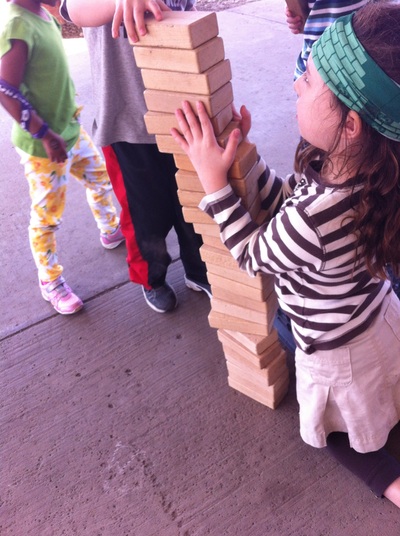
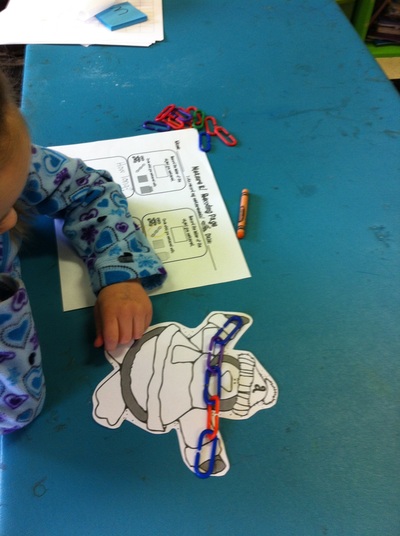
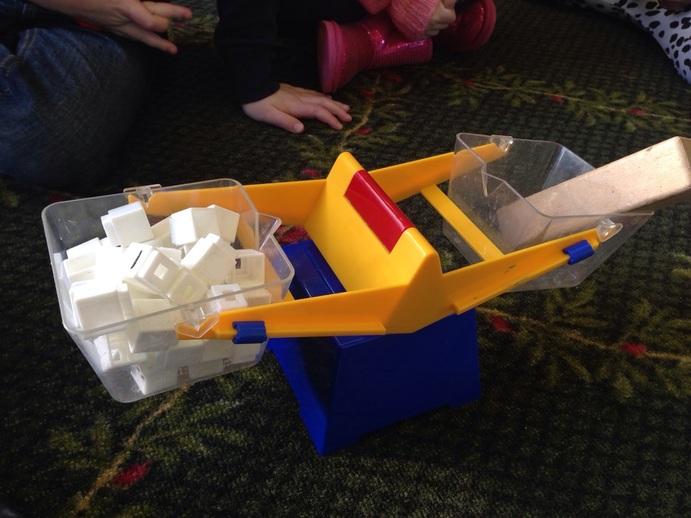
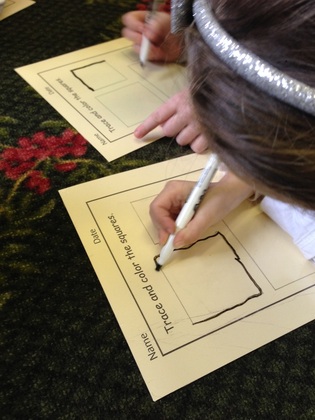
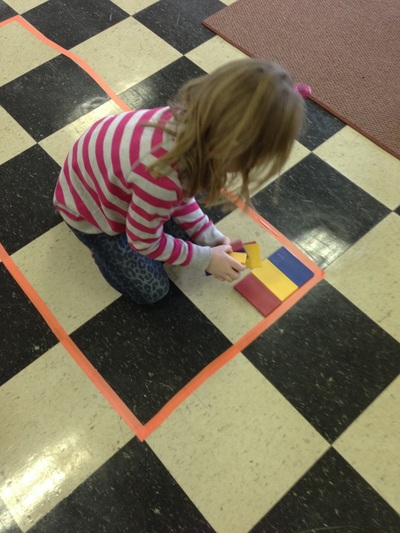
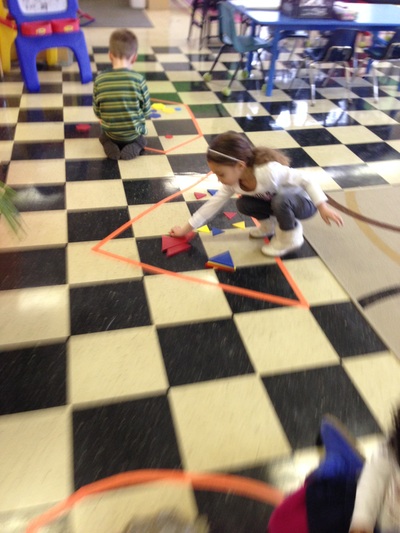
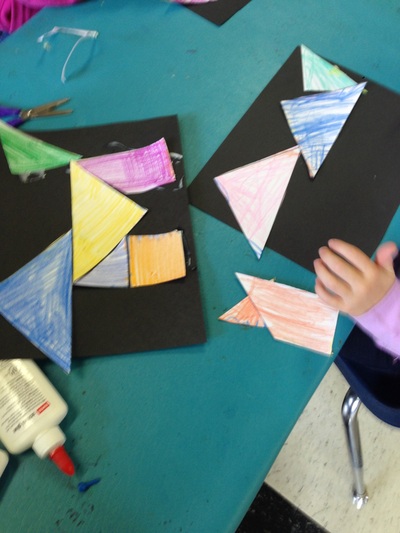
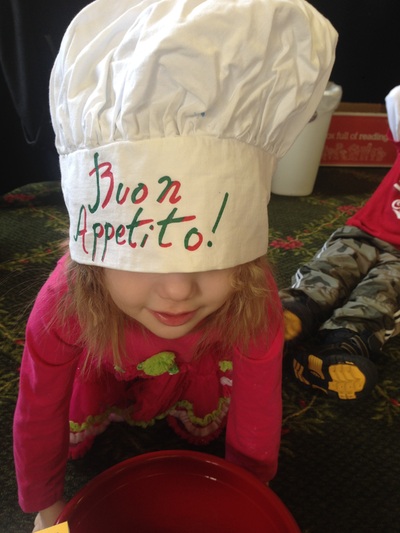
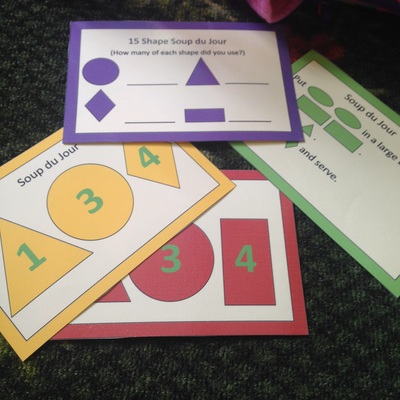

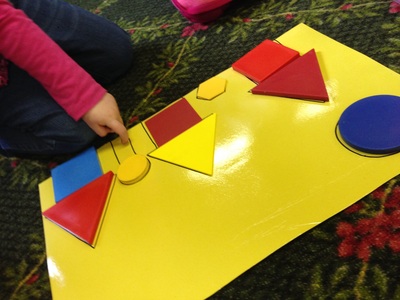
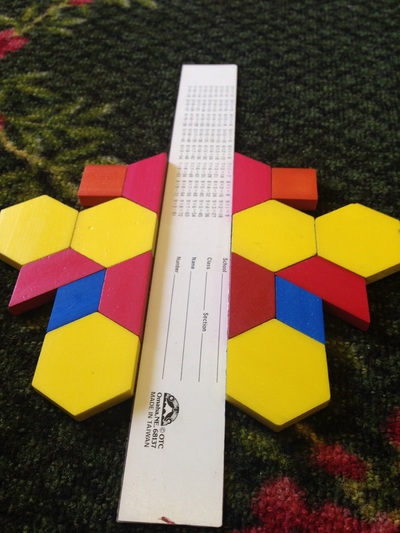
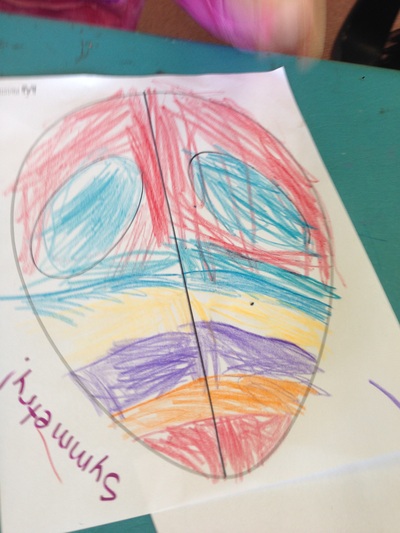
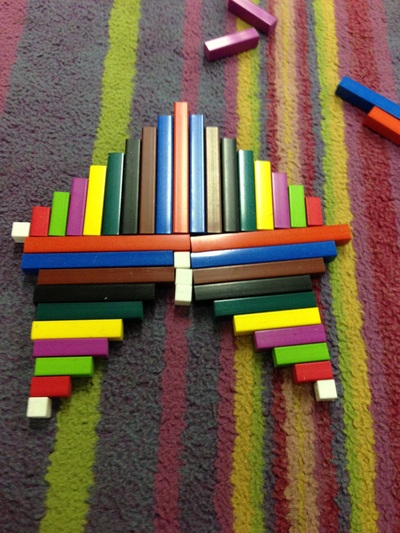
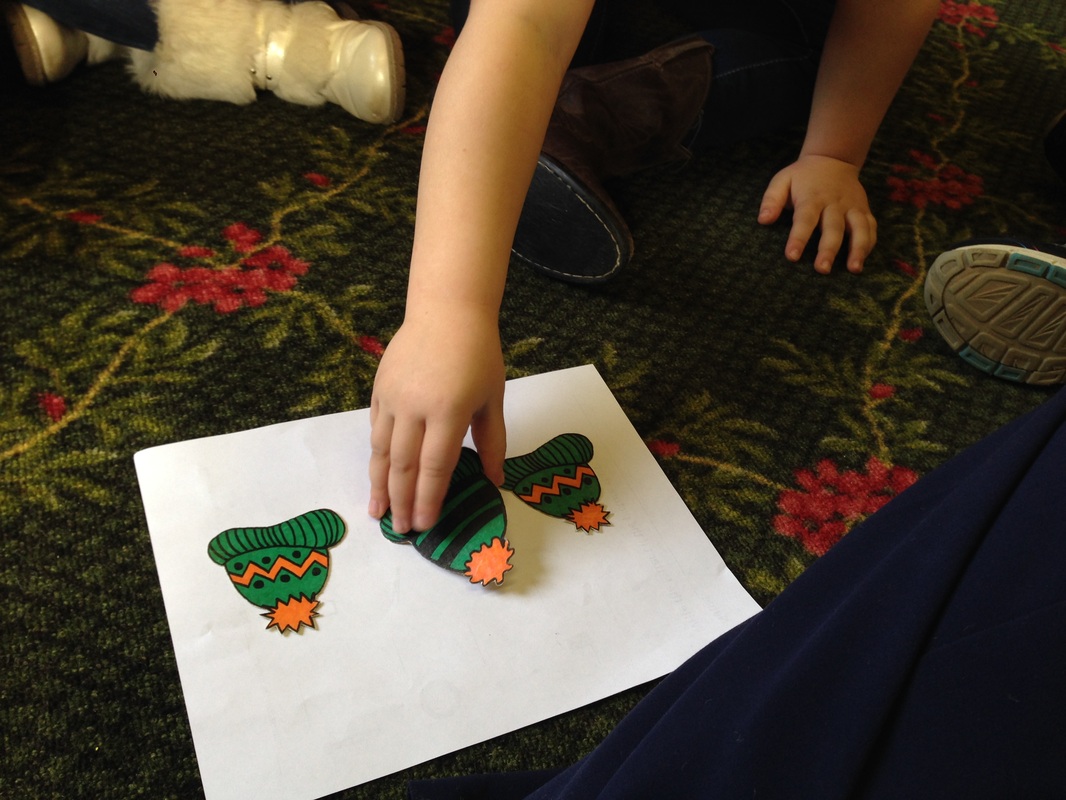
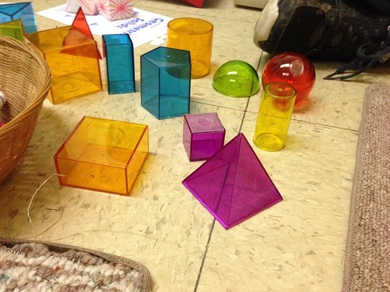
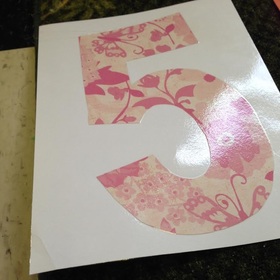

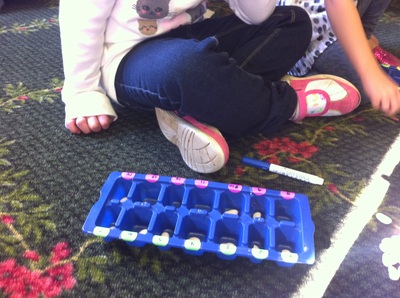
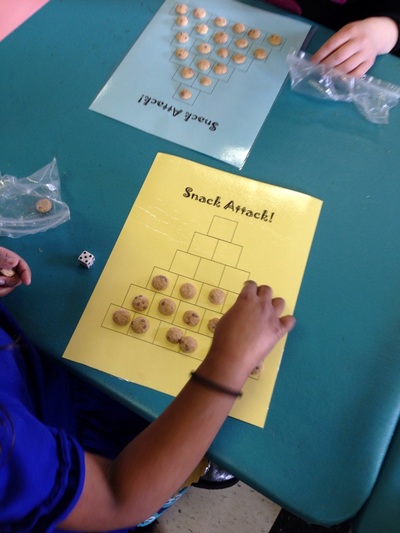
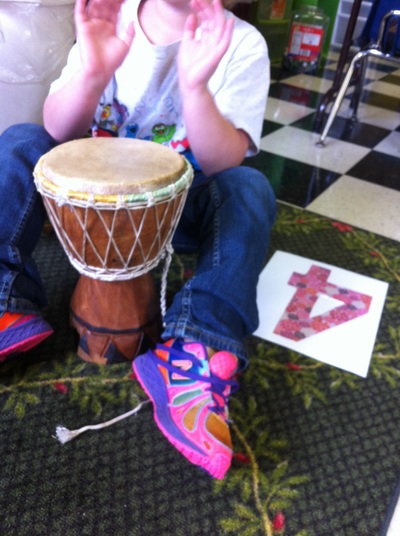
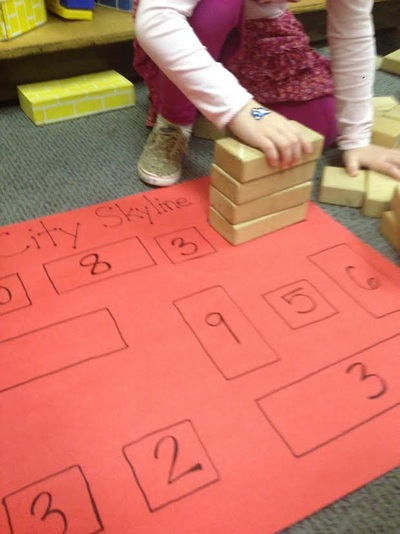
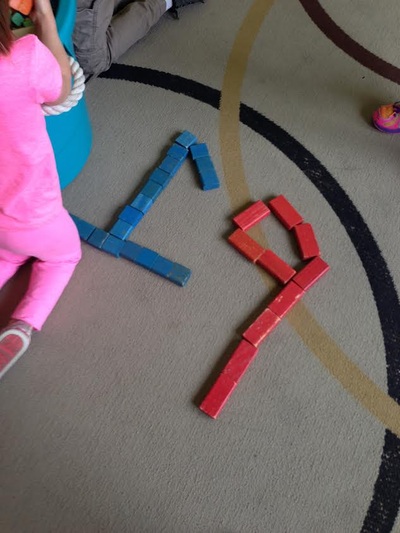
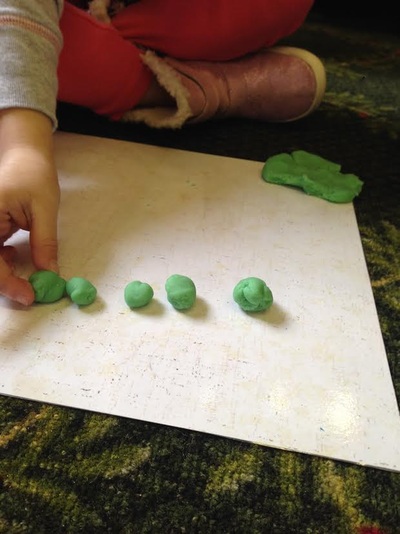
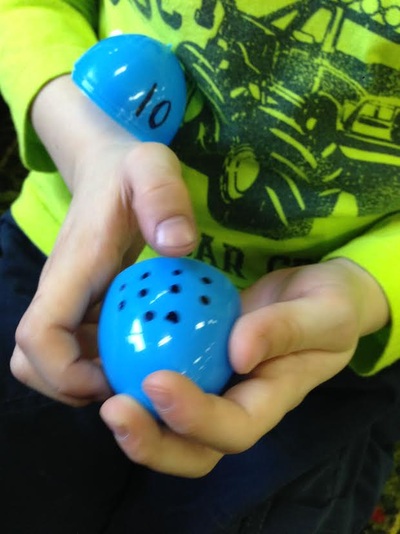
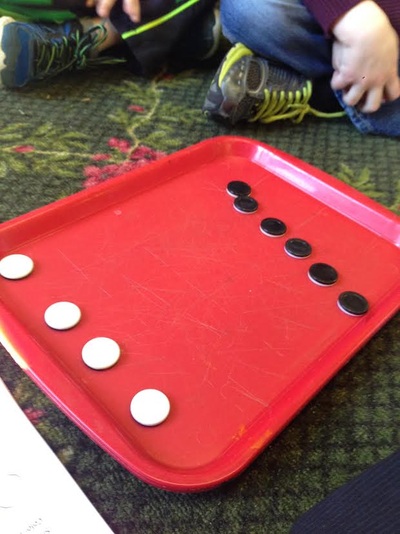
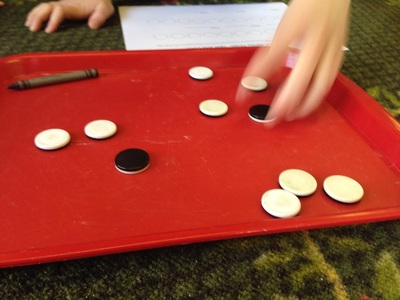

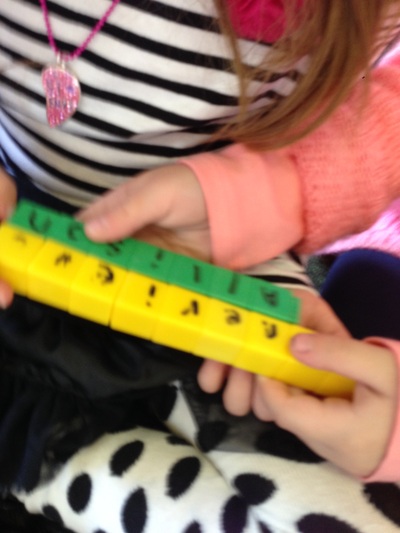
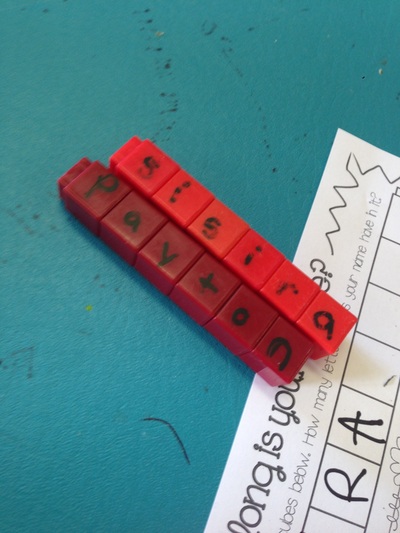
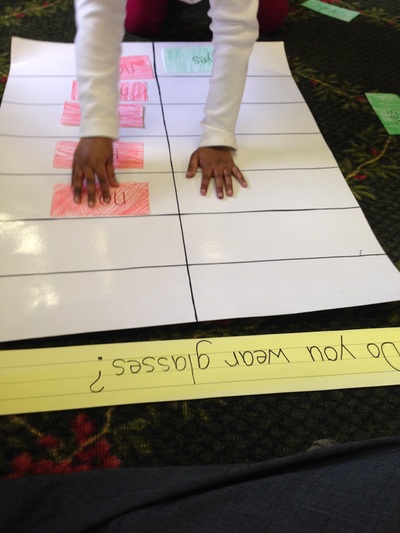

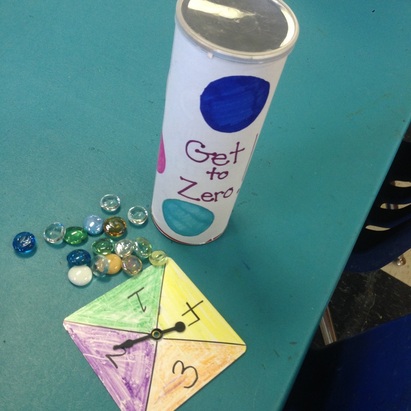
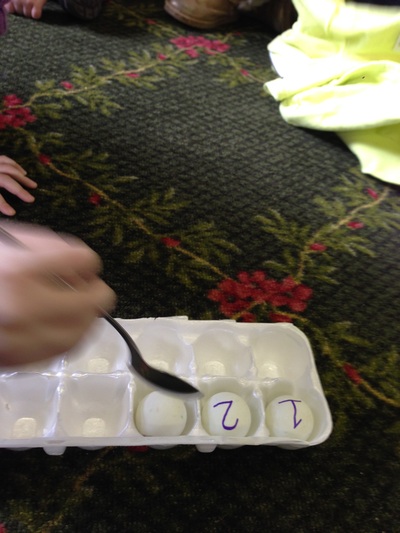
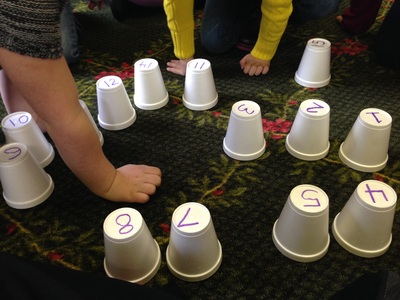
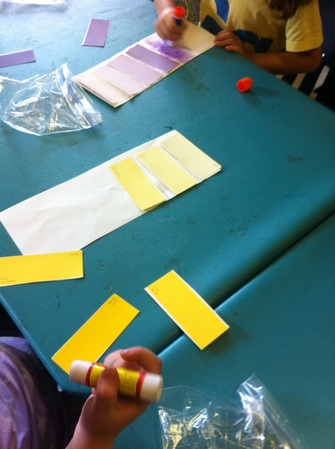

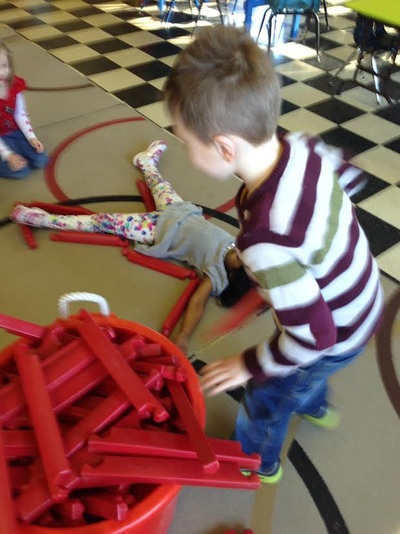
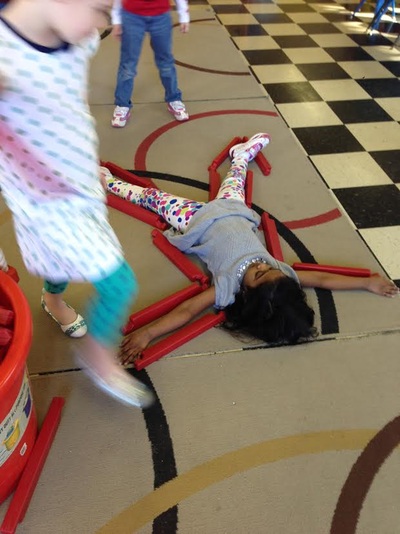
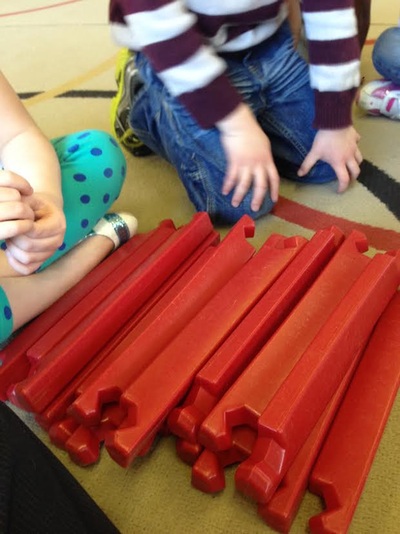
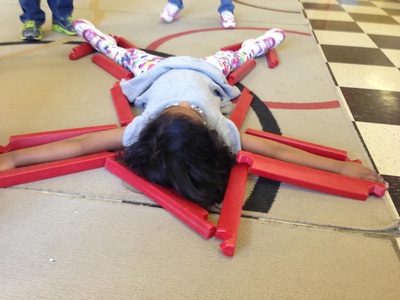
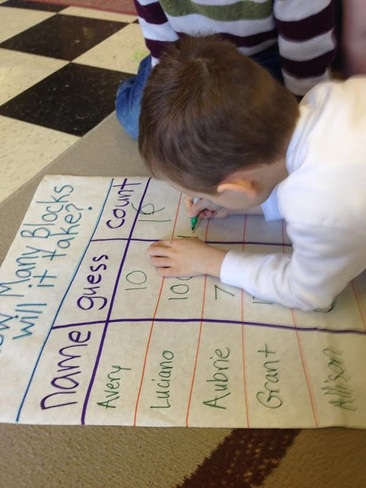
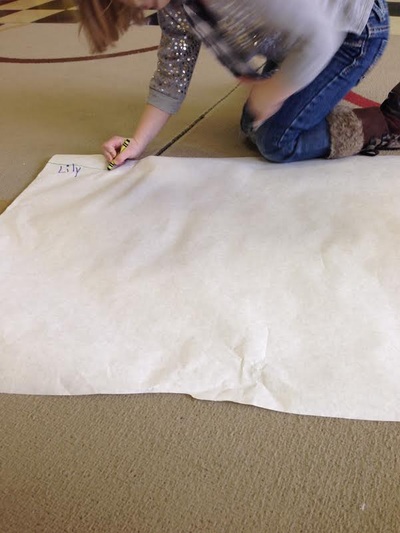
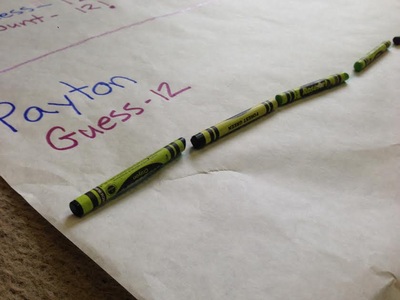

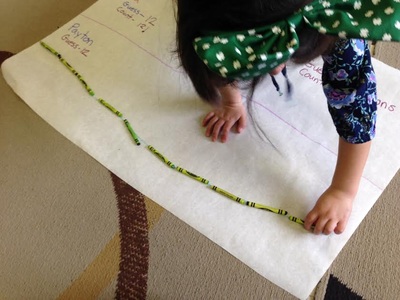
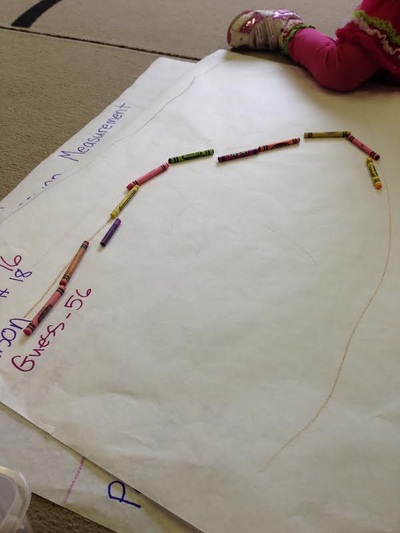
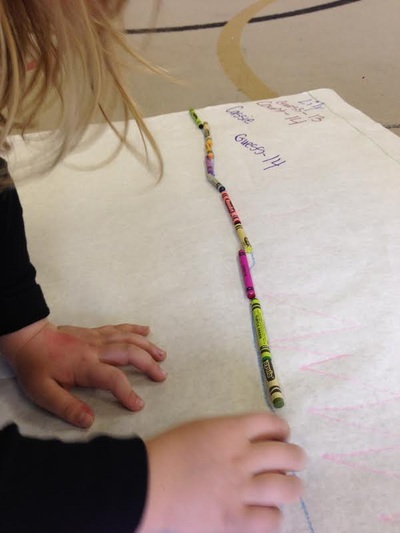
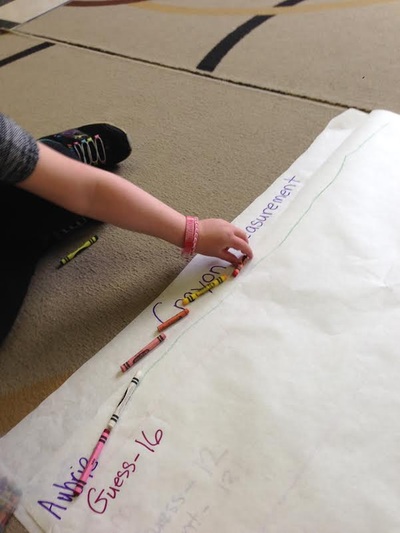

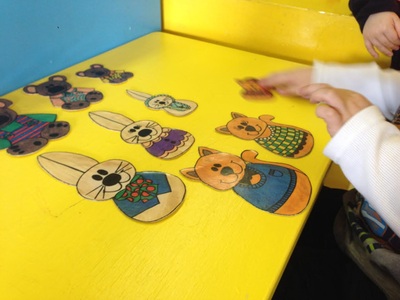
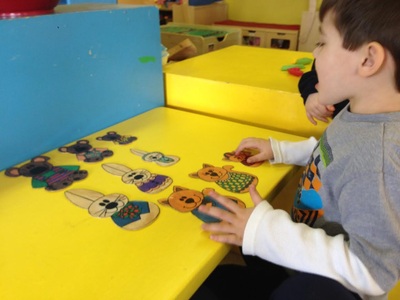

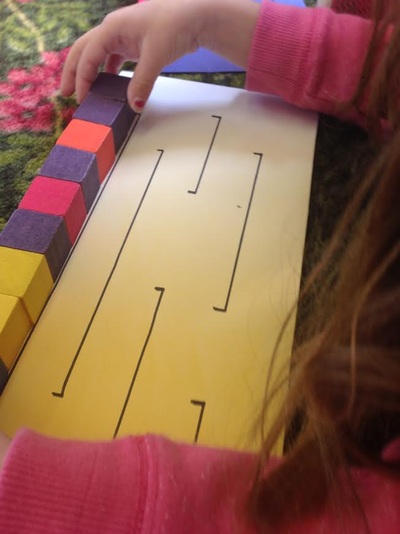

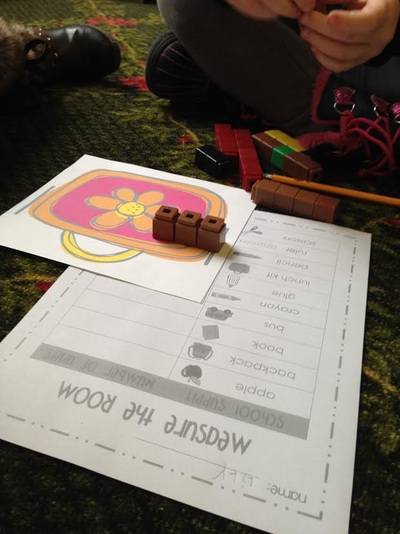
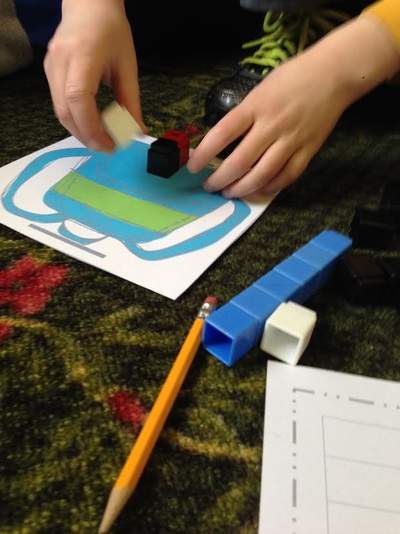
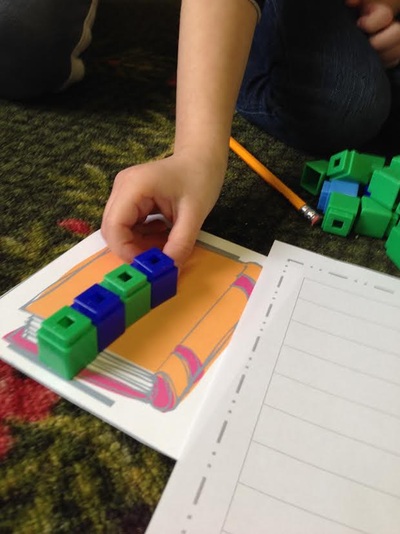
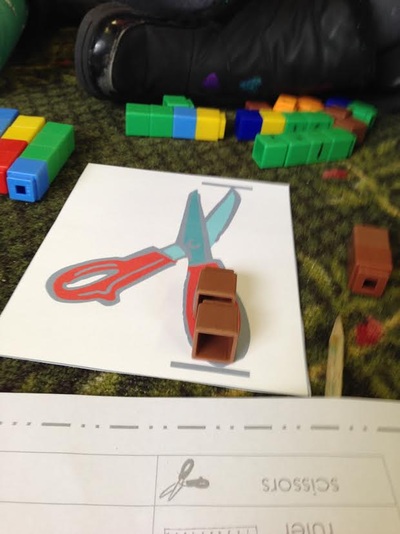
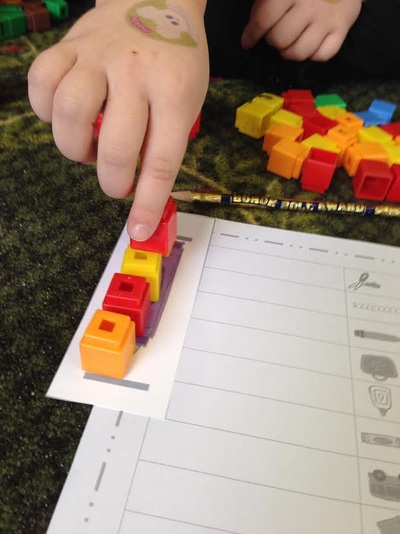
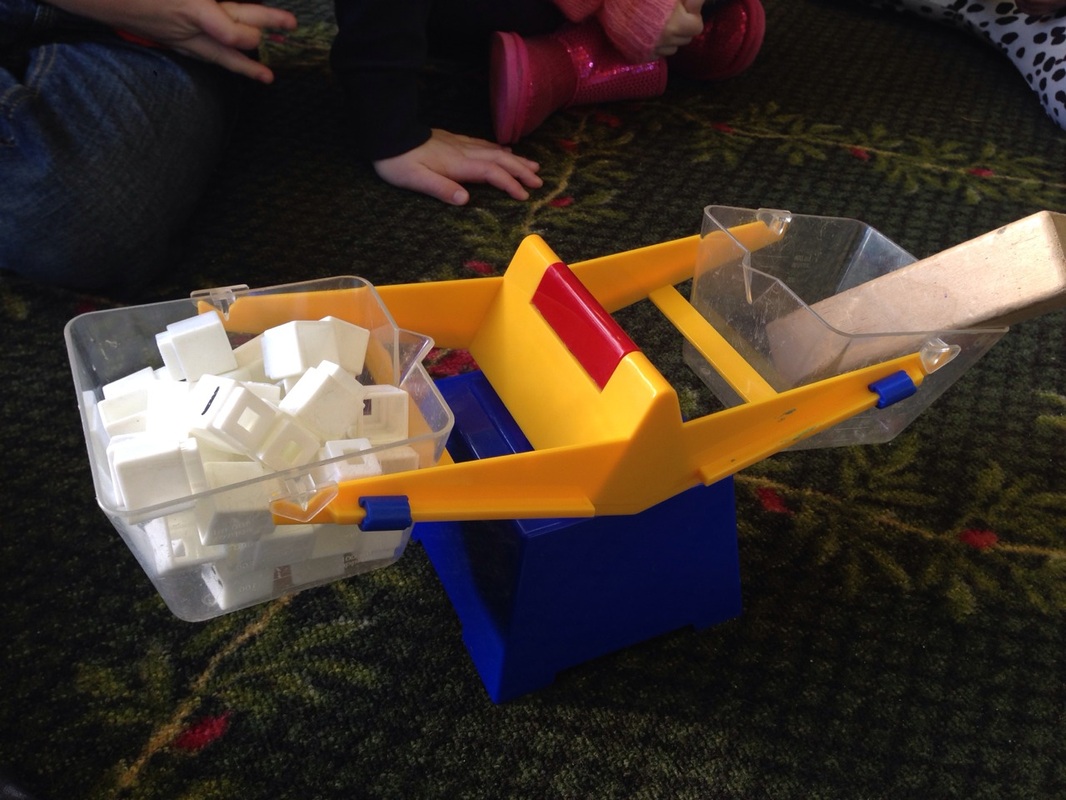
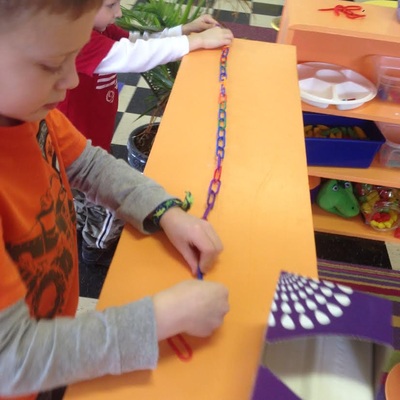
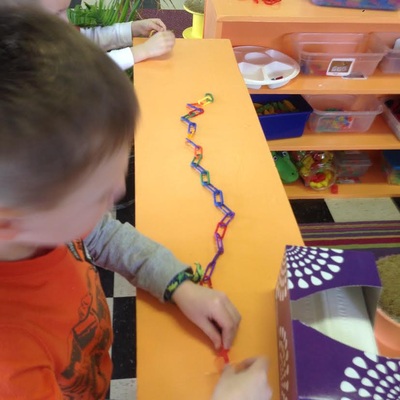
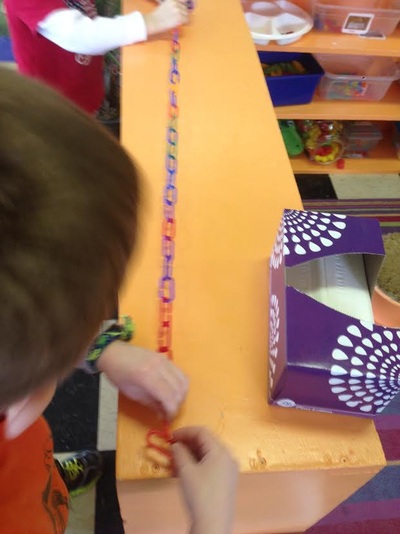
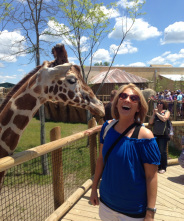
 RSS Feed
RSS Feed